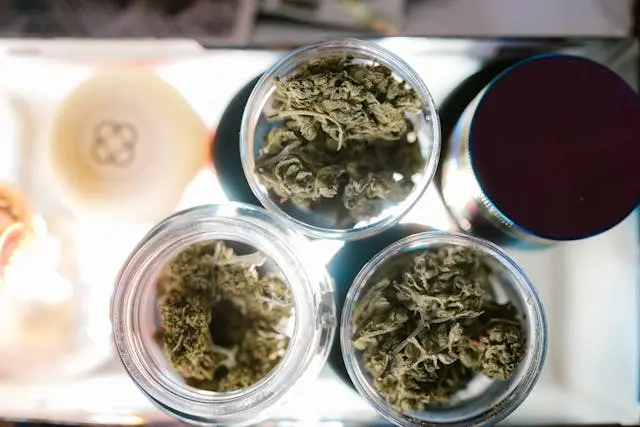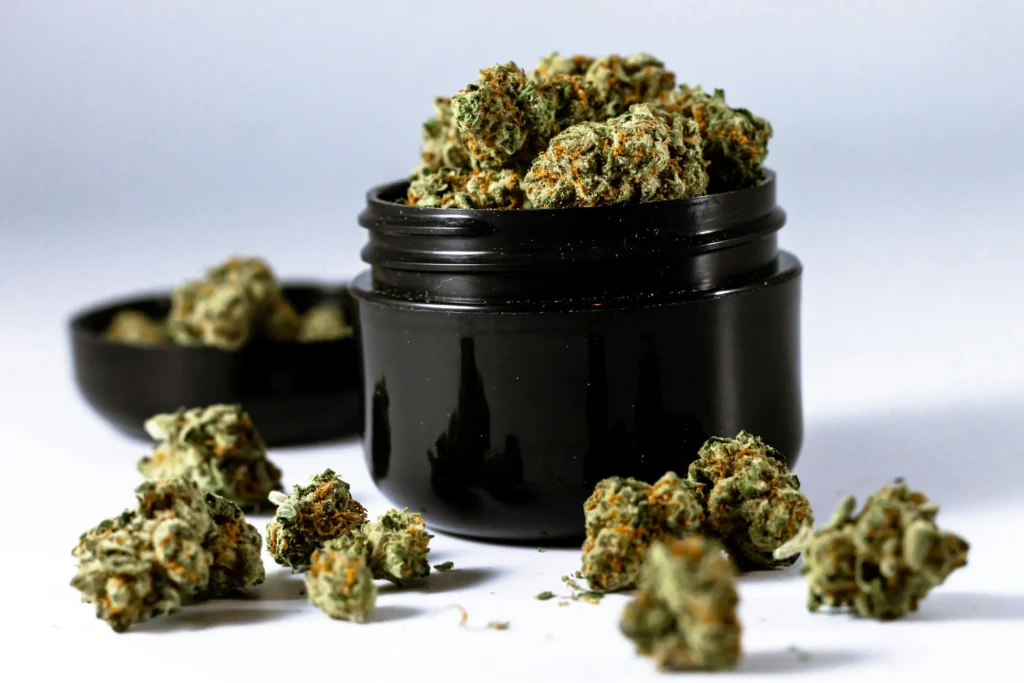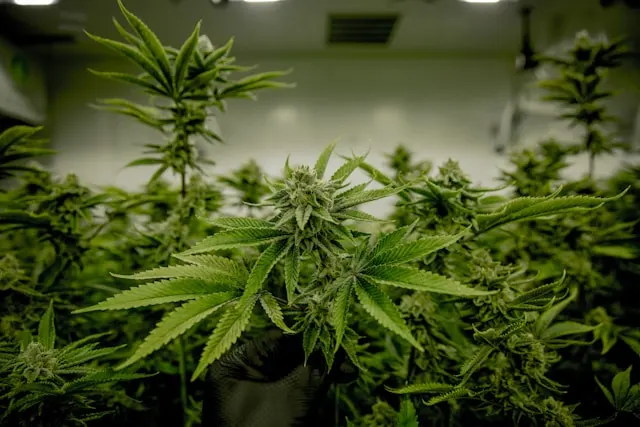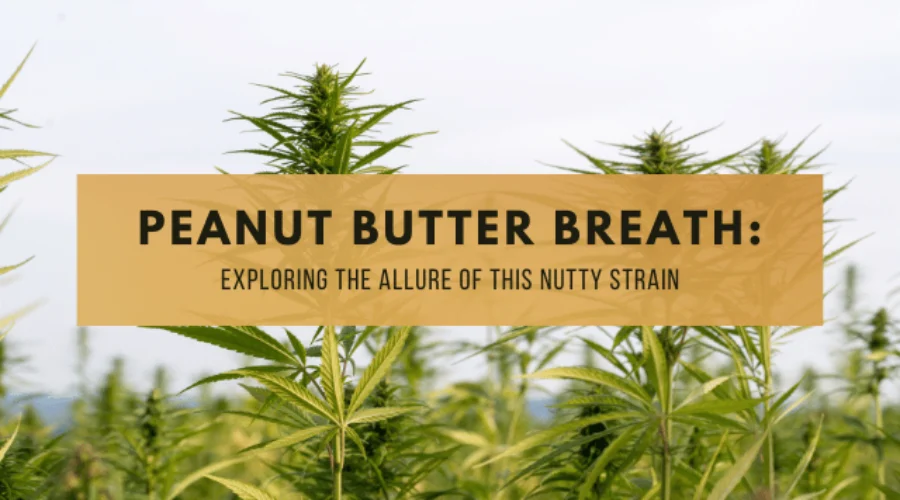Peanut Butter Breath: Exploring the Allure of This Nutty Strain
Table of Contents
It is an indica-dominant hybrid cannabis strain that has been gaining popularity among marijuana enthusiasts for its unique flavor and potent effects. This strain is a cross between Do-Si-Dos and Mendo Breath, resulting in a potent and flavorful bud.
The Peanut Butter Breath strain gets its name from its creamy and nutty aroma, reminiscent of freshly ground peanut butter. Its flavor profile is equally as appealing, with hints of sweet and nutty flavors that leave a lingering taste on the palate.
In terms of effects, it is known for its calming and relaxing properties, making it a popular choice for those looking to unwind and de-stress. Its high THC content provides a strong and long-lasting high, making it a favorite for both recreational and medicinal users.
Whether you’re a connoisseur looking for a new and exotic strain to try, or someone searching for a relaxing and flavorful cannabis experience, Peanut Butter Breath should definitely go on your must-try list.
Genetics and Lineage of Peanut Butter Breath
It’s family tree is quite special, crafted by the wizards at ThugPug Genetics. This cannabis strain is like a tasty mix of peanut butter and jelly, bringing together 50% indica and 50% sativa genetics to create a well-balanced hybrid.
The magical combo is a result of blending two robust strains – Do-Si-Dos and Mendo Breath. These parent strains contribute to Peanut Butter Breath’s unique taste, smell, and effects, making it a flavorful and enjoyable cannabis option.
What makes Peanut Butter Breath stand out is the addition of ruderalis genetics, making it an autoflowering variety. This means it transitions to the flowering stage automatically, which makes it a bit more carefree for growers.
So, when you indulge in Peanut Butter Breath, you’re savoring a delicious fusion of Do-Si-Dos and Mendo Breath, sprinkled with the ease of ruderalis genetics for a delightful and hassle-free cannabis experience.

Effects and Fragrance of Peanut Butter Breath
With a THC content reaching up to 27%, Peanut Butter Breath brings a potent, relaxing vibe that can make you feel happy and carefree. The strain’s indica and sativa mix delivers a soothing body buzz and a loose, easy head high.
It’s known for mellowing out moods, making it great for unwinding after a long day. Individuals who consume it may experience feelings of happiness or even a mild increase in appetite, commonly referred to as the “munchies.”
The term “munchies” is colloquially used among cannabis users to describe the heightened desire for food that often follows cannabis consumption. Just be mindful, as overdoing munchies can sometimes lead to feelings of anxiety.

Peanut Butter Breath charms your senses with a delightful mix of scents. The dominant terpene, terpineol, gives it a woodsy and flowery aroma. L-Limonene and Caryophyllene are also present, contributing to the strain’s unique terpene profile.
When you take a whiff, you’ll notice a nutty, herbal scent with earthy undertones. It’s like catching a hint of a savory and delicious snack.
The flavor follows suit – nutty and earthy, with herbal notes that make it a savory treat. Some describe it as reminiscent of an infused peanut butter cup or a blend with sunflower seeds, creating a distinct and enjoyable olfactory experience.
How and When to Use Peanut Butter Breath
Peanut Butter Breath is not just a tasty treat; it’s also a popular choice for recreational cannabis users. With a THC content ranging from 18% to 28%, this strain packs a punch, offering a strong and mellowing high. It’s a go-to option for those seeking relaxation and mood enhancement after a stressful day.
The strain’s balanced hybrid nature means it’s suitable for various occasions – from chilling on the couch to enjoying a laid-back evening with friends. Just be prepared for the intense case of the munchies that often accompanies this strain; having snacks on hand is a wise move.

Beyond its recreational appeal, Peanut Butter Breath shines as a therapeutic ally. Known for its potential to alleviate anxiety and depression, the strain’s effects can melt away worries and induce a calm state of mind. Its sedating and relaxing properties make it beneficial for those dealing with chronic pain, muscle tension, and headaches.
The strain’s anti-inflammatory characteristics may offer relief for conditions like arthritis and fibromyalgia. For individuals struggling with sleep issues, Peanut Butter Breath’s relaxing effects can provide a comfortable and peaceful night’s rest.
Whether seeking relief from physical discomfort or aiming to enhance one’s overall well-being, this strain has become a favored choice among those exploring the medicinal benefits of cannabis.
How to Grow Peanut Butter Breath
Growing Peanut Butter Breath is a mixed bag – not too easy, not too hard. Thanks to its Mendo Breath background, it’s generally considered an easy-to-grow strain. Perfect for all levels of growers, it comes with resistance to pests and diseases, making it a reliable choice.
The strain’s feminized autoflowering seeds are a plus, ensuring a hassle-free cultivation experience.
Whether you prefer the indoors or outdoors, Peanut Butter Breath is accommodating. For indoor cultivation, the compact plant size and automatic flowering time of 7 to 10 weeks make it a convenient choice.
Outdoors, it thrives in various climates, including Mediterranean, temperate, and cool conditions. Just keep an eye on humidity levels as too much can cause pests, mold, and other growth problems.

Harvesting Peanut Butter Breath Autoflower rewards you with 5 to 15 ounces of marijuana flower per plant. The yield can vary based on factors like indoor or outdoor growth, care practices, and cultivation techniques.
With a bit of attention and care, you can encourage a higher yield through low-stress techniques, such as increased lighting and proper pruning.
Buy Peanut Butter Breath Feminized Seeds
Buy Peanut Butter Breath Autoflower Seeds



